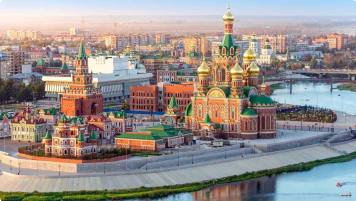A History of Ukraine Since World War Two: Torn Between Russia and the West
Article for travellers about the recent history of Eastern Europe's Ukraine since the 1940's. Odyssey Traveller is an Antipodean travel company serving World Travellers since 1983 with small group educational tours for senior couples and mature solo travellers.
7 Apr 22 · 21 mins read

Ukraine Since World War Two
By Marco Stojanovik
On February 24, 2022, Russia’s army, under the command of President Vladimir Putin, launched a full-scale invasion of Ukraine. Russia’s intention is to guarantee a neutral Ukraine, ending the nation’s desire for closer relations with the West, particularly in the forms of European Union (EU) and NATO membership.
In doing so, President Putin is seeking to reassert political, economic, and military control over a nation that has historically been under the direct influence of the Russian Empire and the Soviet Union. Following World War Two, in particular, Moscow ruled supreme over most of the Ukrainian lands. But when the Soviet Union collapsed in 1991, both Ukraine and Russia became independent countries. Since then, Ukraine has gradually veered to the West, to the dismay of Russia.
Since 2004 in particular, with the enlargement of the EU, the country has been torn between its aspirations to join the union or return to the influence of Russia. This has led to an ongoing period of political turmoil, which has witnessed the Orange Revolution in 2004, the Maiden Revolution and Russia’s annexation of Crimea in 2014, and ongoing Russian military involvement in Ukraine’s Donbass region since that same year.
Putin’s plan now is to take over the entire country. The historian Serhii Plokhy writes, “Russia today seems to be following in following in the footsteps of some of its imperial predecessors who continued to harbor nostalgia for their empires long after they were lost.” Putin has gone on record as characterizing the collapse of the Soviet Union as the greatest geopolitical catastrophe of the twentieth century – the “disintegration of historical Russia”. He is now seeking to reverse those losses.
This article explores the history of Ukraine since World War Two to provide a detailed background to today’s geopolitical conflict. It has been adapted from Part V of Serhii Plokhy’s The Gates of Europe: A History of Ukraine. For those further interested in the history of the region, Odyssey Traveller offers numerous tours for mature and senior travellers to Russia, Poland, the Baltics, and across the rest of Europe. Or you can check out our other articles about Europe.
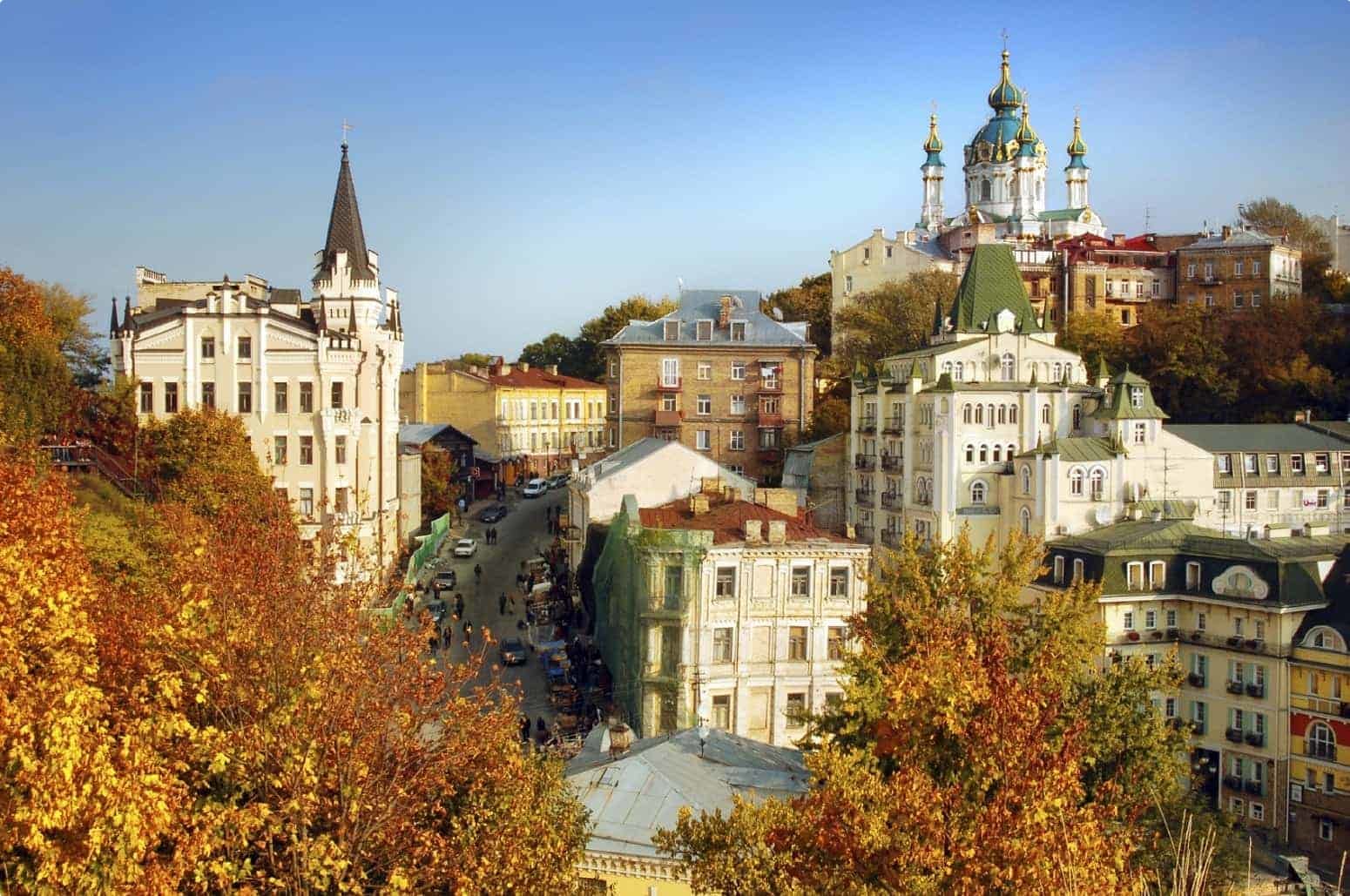
World War Two
During World War two, Ukraine fell under a three-year occupation by Nazi Germany from 1941 to 1944. Many Ukrainians who had experienced two previous years of brutal Soviet rule initially regarded the Nazis as liberators. Indeed, some activists even hoped it would help build momentum to establish an independent state of Ukraine.
Other Ukrainians totally resisted the Nazi occupation from the very beginning, and a partisan movement quickly spread over the occupied territory, provoked by resentment, outage, and defiance. Some members of the nationalist underground formed the Ukrainian Insurgent Army (UPA), with close to 100,000 soldiers at its height fighting both Soviet and Nazi forces.
The UPA also fought against the Polish insurgency. The long history of animosity between Ukrainians and Poles in Volhynia and Galicia, exacerbated by each side’s mounting suspicions of the other’s intentions in asserting sovereignty over these contested regions, led in the spring and summer of 1943 to mass actions of ethnic cleansing. This involved the UPA burning villages and committing several massacres of innocent Polish civilians, the death toll numbering up to 100,000.
After the defeat of the Nazis at the Battle of Stalingrad (23 August 1942 – 2 February 1943), the Soviet Red Army began a western counteroffensive. They forced the Germans to slowly retreat from Ukraine from mid-1943 and in November they were able to re-enter Kiev. Communist guerrillas, organised by the Soviet secret police, aided the advance in Western Ukraine and the Red Army began to penetrate in Galicia in spring 1944. By October, the last territory of current Ukraine was again under Soviet control.
The former Soviet territories were immediately reintegrated into the Ukrainian Soviet Socialist Republic (Ukrainian SSR), along with extra lands that the Soviets had not controlled before the war. Poland agreed to cede Volhynia and Galicia for the compensation of German territories in the west, and a new boundary was drawn between Poland and the Soviet Union along the Molotov-Ribbentrop line.
Plokhy writes, “Stalin was eager to move not only borders but also peoples in order to stabilize future frontiers, get rid of minorities, and thereby forestall and possibility of irredentist movements in the Soviet territories.” As such ethnic boundaries were also adjusted to fit the new borders, with populations mutually exchanged between Poland and the Ukrainian SSR. Poles and Jews went east, and Ukrainians headed east. In two years, between 1944 and 1946, close to half a million Ukrainians were deported from lands west of the Molotov-Ribbentrop line to the Ukrainian SSR.
Stalin also made sure that Ukraine and Belarus, with their new western borders, would become members of the United Nations to additionally legitimize the new Soviet boundaries. As members of Ukraine’s international status was raised to one comparable with the British dominos of Canada and Australia or even sovereign states like Belgium or Brazil. This was part of a Soviet deal with the United States to ensure a balance with the Western bloc in the General Assembly.
By the end of the war Ukraine presented a sorry picture – the republic one of the war’s main victims. Total civilian losses during the war is estimated at seven million – constituting more than 15% of its population – close to one million of which were Jewish shot and killed by the Einsatzgruppen. Out of 36 million remaining Ukrainians, some 10 million were left homeless, as approximately 700 cities and towns and 28,000 villages lay in ruins. Ukraine further lost 40 percent of its wealth and more than 80 percent of its industrial and agricultural equipment.
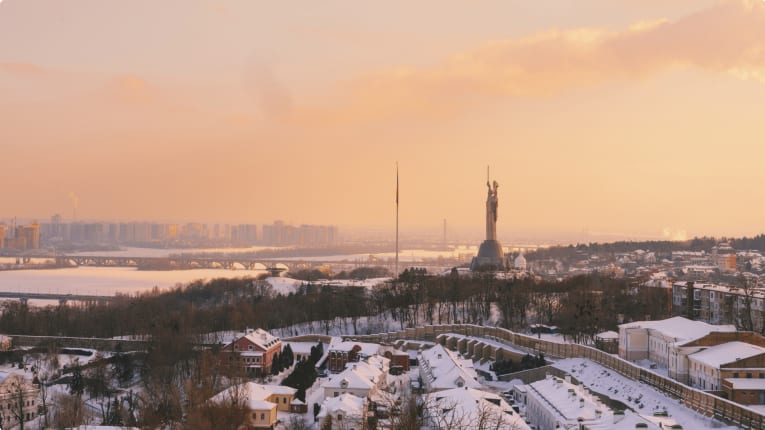
Ukrainian Soviet Socialist Republic
Joseph Stalin’s Final Years
The first post-war decade in Ukraine consisted largely of restructuring the shattered economy and reimposing Soviet ideological and political control over the recovered territories. On the economic front, Ukraine’s industrial base had been devastated during the war by a combination of Soviet scorched-earth tactics, the deindustrialization policies of the Germans, and the relentless fighting between the two armies. Economic reconstruction was undertaken immediately, some places of Ukraine having to be rebuilt almost from scratch.
In this effort, the Soviets prioritized heavy industry, particularly in preparation for conflict with the capitalist West, which the Kremlin believed was imminent. By 1950, Soviet Ukraine had surpassed pre-war levels of industry and production, becoming the centre of Soviet arms industry and high-tech research. Over the course of the cold war, the republic would serve as a Soviet military, its territory crowded by military bases packed with the most up-to-date weapons systems.
The stress on heavy industry came to the detriment of consumer needs; people were left to suffer and even die. Agricultural recovery, for example, proceeded much more slowly, not reaching pre-war levels of production until the 1960s. In 1946-47, a famine hit southern Ukraine especially hard, causing the deaths of close to one million people.
Politically, the Soviets set out to reinforce Moscow’s ideological control over Ukraine. Following the war, more than 180,000 Ukrainians from western Ukraine were arrested and deported to gulags in Siberia and the Soviet interior for real or alleged collaboration with the Nazis and the Ukrainian nationalist underground. An additional 76,000 Ukrainians were deported in October 1947.
Attacks on Ukrainian cultural figures also took place. The search for ideological deviants began with Soviet writers, attacked for “bourgeois individualism,” “lack of ideological clarity,” and “kowtowing to the West”. The persecution and repression then spread to musicians and historians, who in the wartime years had been permitted to develop patriotic themes and sentiments in a mobilization effort against the Germans.
Plokhy writes, “Moscow’s efforts to reimpose ideological uniformity and the degree of central control that existed before the war were only partly successful, especially in a republic like Ukraine, where nationalist resistance to the Soviet regime lasted well into the 1950s.” Indeed, the UPA continued to challenge Soviet rule in the Galician countryside significantly longer than any other armed resistance in Soviet-occupied eastern Europe. The regime responded with repressive measures that included forced deportations of hundreds of thousands of Ukrainians suspected of supporting the underground until the organised resistance was eventually crushed.
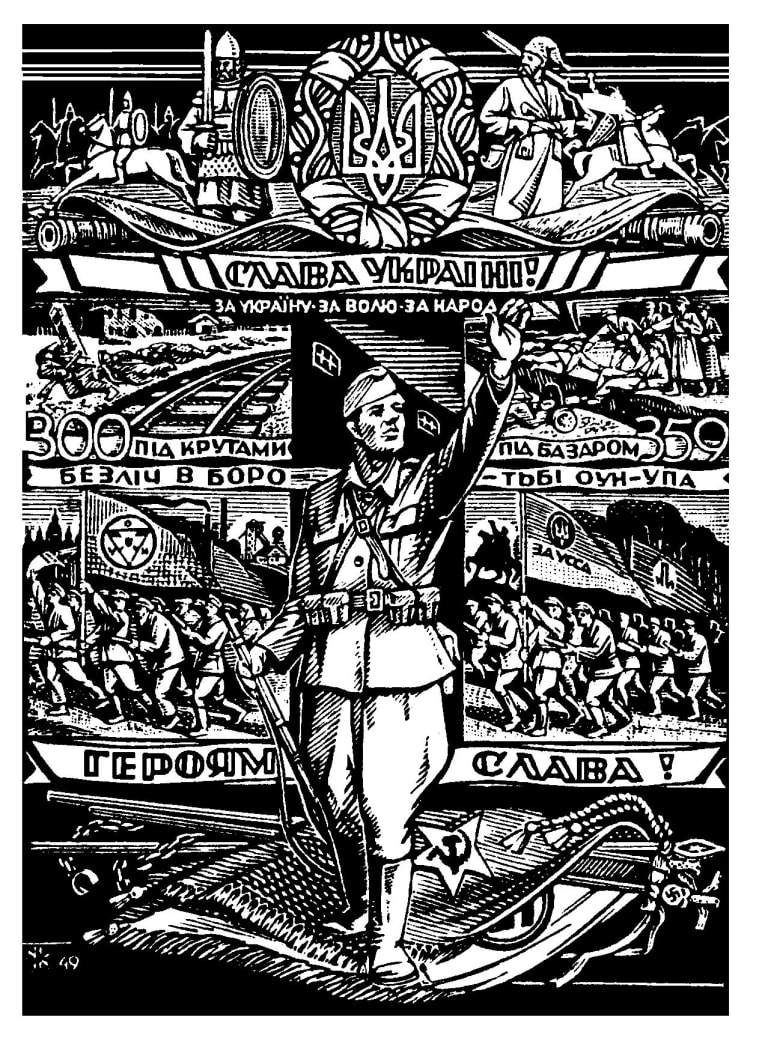
The Khrushchev Period
Following Joseph Stalin’s death in 1953, Nikita Khrushchev ascended over his rivals in Moscow to secure leadership of the Communist Party of the Soviet Union. His success was made possible by the help of his clients in Ukraine, who he rewarded handsomely by bringing them to Moscow to staff party and government posts.
Plokhy writes, “By promoting Ukrainian party cadres to positions of power in Moscow, Khrushchev made the Ukrainian communist elite a junior partner of the Russian party and government bosses in running the multi-ethnic Soviet empire. Members gained influence on decisions made in the center, as well as more autonomy in deciding their internal Ukrainian affairs.”
Khrushchev held few prejudices against Ukrainians who adhered to the party line and were loyal to the Soviet state. Rather, he attacked Stalin for instigating purges of party members, and politically rehabilitated many former leaders of Ukraine.
This action came as part of a larger process known as the “Khrushchev thaw“, in which the new Soviet leader created an atmosphere of relative freedom. The Ukrainian KGB – the Committee for State Security, a new name for the secret police – and Ukraine’s general prosecutor’s office reviewed close to a million cases of victims of political terror, rehabilitating three hundred thousand people (though many prisoners continued to serve their long sentences). The publication of works exposing the crimes of Stalin’s regime (including the writings of Aleksandr Solzhenitsyn, a prisoner of the Gulag between 1945 and 1953) were permitted. And a generation of writers and artists whose works had been forbidden under late Stalinism returned to public life.
Khrushchev did release new repression, however, against religious groups, promising the extinction of religion before the arrival of communism. Thousands of Orthodox churches, mosques, synagogues, and prayer houses were closed as part of this revival of the antireligious campaign of the 1920s and 1930s.
A distinct trend towards Russification also emerged, the importance of Russian language emphasised for the integration of the Soviet peoples and the diminishing significance of borders between Soviet republics. Students in Ukrainian-language schools had already been falling compared to the pre-war years, with the proportion of students in Russian schools increasing from 14 percent in 1939 to 25 percent in 1955 and to more than 30 percent in 1962.
Khrushchev’s economic reforms, meanwhile, contributed to the spectacular expansion of Soviet industry and the increasing urbanization of Society. Ukraine, in particular benefitted from the construction of hydroelectric power stations on the Dnieper and chemical complexes. The republic also deeply involved in the Soviet atomic and space projects.
However, the growth of the Soviet space program and military industrial complex did little for the wellbeing of the population. Agriculture still lagged behind and the 1960s again found itself on the verge of famine caused by a number of droughts. This time, the government conceded to buy grain aboard to avoid a repetition of previous disasters.
Further reforms intended to increase agricultural productivity and improve living standards in the village only made products much more expensive in the cities. In October 1964, when the members of Khrushchev’s inner circle removed him from power, his economic initiatives had left store shelves empty and driven prices for agricultural products through the roof.
Ukraine Under Shelest & Shcherbytsky
During Khrushchev’s final years in power, two figures – Petro Shelest and Volodymyr Shcherbytsky – rose to prominence, going on to dominate Ukraine’s political landscape for almost thirty years.
Shelest was promoted to party leader in Ukraine in June 1963. Not long after, following the ousting of Khrushchev, the political situation in Moscow helped him to pursue the ideas of national communism in Ukraine. At this point, a number of political cliques were fighting for control for control of the party and government, and so the support of Ukrainian party cadres was essential in Moscow. Shelest chose to give support to the Leonid Brezhnev group, which was competing with cadres led by former KGB head Aleksandry Shelepin for control of the party, in return for limited Ukrainian political and cultural autonomy.
This informal deal came to an end in 1972, however, when Brezhnev, having marginalized Shelepin and achieved prominence, decided to move against Shelest. The latter was transferred to Moscow in May 1972 and, while still a member of the Moscow Politburo, accused of nationalist deviations on the basis of his book O Ukraine, Our Soviet Land, which was full of pride in Ukrainian history and the republic’s achievements under socialism.
Brezhnev replaced Shelest with Shcherbytsky, a loyalist to Brezhnev who came from the same native Dnipropetrovsk region. He would serve in office for 17 years until his resignation in September 1989. Shelest’s departure from Ukraine was followed by a purge of his loyalists and an attack on Ukrainian intellectuals and human rights activists. Political repression was accompanied by a broad assault on Ukrainian culture and intensification of Russification. All took place as Brezhnev reinstated Stalin-era controls on public debate and a return to political repression across the Soviet Union.
Ukraine’s economic performance, meanwhile, continued to deteriorate. According to official numbers, in the course of the two decades from 1966 to 1985, the annual industrial growth rate had decreased from 8.4 to 3.5 percent, with the important ferrous metallurgy and coal mining industries facing especially serious problems. In agriculture, growth fell from 3.2 to 0.5 percent, adversely affected by a series of droughts, lack of incentives, and excessive centralization of collective farm management. Of course, official numbers did not mean much in an era of falsified reports, hiding an even grimmer reality.
The Chernobyl Disaster
In April 1986, the worst technological disaster in world history struck Ukraine – the explosion and partial meltdown of the fourth reactor at the Chernobyl nuclear power plant, located less than seventy miles north of Kyiv. Releasing the equivalent of 500 Hiroshima bombs, the explosion contaminated more than 50,000 square kilometres of land in Ukraine alone – a territory larger than Belgium. The exclusion zone around the reactor alone accounted for 2,600 square kilometres. From here, more than 90,000 inhabitants were evacuated in the first weeks of the explosion, most of which would never see their homes again.
Across Ukraine, the radiation fallout directly affected 2,300 settlements and more than three million people. Hundreds of thousands received doses that were sufficient to increase the risk of various cancers. It further endangered close to 30 million people who relied on the Dnieper and other rivers for their water supply.

Following the disaster, Ukrainian leaders suddenly realised how little control they had over the destiny of their republic. Some officials were invited to join the central government commission dealing with the consequences of the accident but had little influence there, finding themselves obliged to follow instructions from Moscow and its representatives at the site.
Despite the rapidly increasing radiation level, Mikhail Gorbachev (recently come to power as leader of the Soviet Union) ordered his Ukrainian underlings to carry on as usual. They were to show the country and the world that the situation was under control and that the Chernobyl explosion presented no danger to the health of the population.
The Chernobyl disaster sharply increased discontent with Moscow and its policies across all party and social lines. Plokhy writes, “[It] awakened Ukraine, raising fundamental questions about relations between the center and the republics, the Communist Party and the people, and helping to start the first major public debate in a society struggling to regain its voice after decades of Brezhnev-era stagnation.”
Indeed, the ecological movement, which presented Ukraine as a victim of Moscow’s activities, became one of the first forms of national mobilization in Ukraine during the following years of Gorbachev reforms. Ukraine’s national mobilization would in turn help to expedite the breakup of the Soviet Union.
The Road to Ukrainian Independence
Gorbachev did not intend for an upsurge in nationalism when he introduced his perestroika and glasnost reforms in the late 1980s. Perestroika (“restructuring” in Russian) was a series of political and economic reforms meant to address the Soviet Union’s stagnant economy, while glasnost (“openness”) entailed popular involvement in the process. But in their implementation, the reforms created the perfect opportunity for political mobilization from below.
From mid-1986, the Ukrainian press and media began increasingly to broach long-forbidden topics. Unofficial groups started to form the following year, primarily in Kyiv and Lviv. Mass mobilisation followed in 1988, with the first public demonstrations. National organisations also emerged that year, galvanised around traditional concerns for Ukrainian language, culture, history, resurgent interests such as religion, and new concerns over the environment and the economy.
The first openly political organisation in perestroika-era Ukraine was the Ukrainian Helsinki Union, formed by dissidents of the 1960s and 1970s freshly released from the Gulag. Their aim was the restoration of Ukraine’s sovereignty as a means to guarantee the rights of both individuals and nations, defined in political and cultural terms. For this, they sought the transformation of the U.S.S.R. into a genuine confederation of states. With branches in all regions of Ukraine by 1989, their influence was considerable.
The year 1989 became a turning point in Ukrainian political history, with the arrival of mass politics; the first semi free elections to the new Soviet parliament in Moscow; and the creation Ukraine’s first political opposition party, called Rukh – the Popular Movement for Perestroika – whose membership reached 600,000 by 1990.
In 1990, the first competitive elections to the Ukrainian parliament took place. Leonid Kravchuk, recently the Communist Party of Ukraine’s (CPU) secretary for ideology, was elected chairman. That summer, the parliament followed in the footsteps of its counterparts in the Baltic republics and Russia, declaring Ukraine a sovereign country. The declaration did not stipulate the republic’s secession from the USSR but gave its laws precedence over those of the union.
Somewhat ironically, sovereignty, and eventually complete independence, were supported by disparate sides of the newly elected parliament. Over the following year, Kravchuk showed real political talent in manoeuvring among various groups of deputies to steer parliament towards these goals. Gradually the groups’ views started to converge on key issues, with communist party elites and the democratic opposition united against Gorbachev, albeit for different reasons.
Whereas party elites were unhappy with Gorbachev’s reforms for the threat they posed to their power, Rukh considered these reforms insignificantly radical and too slowly implemented. The eventual solution for both sides would be political and economic autonomy for Ukraine.
Faced with the rising tide of nationalism, Gorbachev proposed a negotiated new union treaty that would give its constituent republics greater autonomy while preserving central control of foreign policy, the military, and the financial system. But Gorbachev also succumbed to the pressure of hard-liners in his government and gave tacit approval for the rollback of democratic freedoms.
In response, students led mass demonstrations and a hunger strike in Kyiv in October 1990. Among other things, they demanded the resignation of the prime minister and Ukraine’s withdrawal from negotiations on the new union treaty. In the same month, Rukh proclaimed its ultimate goals the total independence of Ukraine. Only the CPU supported Gorbachev’s plans for a new union treaty.
The event that triggered the change of heart among the conservative deputies of the Ukrainian parliament was the hard-liners’ coup against Mikhail Gorbachev in Moscow on August 19, 1991. On August 24, 1991, the day after Boris Yeltsin took control of the union government, the Ukrainian parliament voted in favour of independence.
On December 1, 1991, Ukrainians voted overwhelming in a referendum to confirm the parliamentary vote for independence. Turnout reached 84 percent, with more than 90 percent of voters supporting independence. In an election coinciding with the referendum, Ukrainians chose Kravchuk as their president. Less than a month later, the USSR formally disbanded.

Independent Ukraine
Ukraine Under Kravchuk and Kuchma
The history of Ukraine between 1991 and 2004 was marked by the presidencies of Leonid Kravchuk (1991-1994) and Leonid Kuchma (1994-2005).
The first challenge facing Kravchuk was to resist political pressure from Moscow to enter into a restructured Soviet Union. This came to the fore in January 1993, when Ukraine refused to sign the Statute of the Commonwealth, declining to join the Commonwealth of Independent States (CIS) with former Soviet states. Although Ukraine had helped create the organisation following the dissolution of the Soviet Union two years earlier, it now opposed Russia’s intentions to use the commonwealth as an instrument for the reintegration of post-Soviet space.
Nevertheless, Ukraine continued to participate in the CIS without being a member state, taking active parts in its economic program. It refused to partake in military affairs though, refusing to sign numerous agreements on collective security with other commonwealth members over the course of the 1990s.
Serious disagreements arose between Kyiv and Moscow regarding the future of the Soviet armed forced, control over nuclear arsenals, and the disposition of the Soviet Black Sea Fleet. Eventually by 1997, two countries signed a set of agreements providing legal justification for the continuing presence of the Russian fleet. Plokhy writes, “The deal opened the door to a Russo-Ukrainian friendship treaty that guaranteed Ukrainian territorial integrity.” By the end of the 1990s, Ukraine had settled its border and territorial issues with Russia, created its own army, navy, and air force.
The country had also established diplomatic and legal foundations for integration with European political, economic, and security organizations. In its engagement with the West, Ukraine gave up the nuclear weapons it had inherited from the USSR in January 1994, and the same year signed a cooperation agreement with the EU and entered into the Partnership for Peace agreement with the North Atlantic Treaty Organization (NATO).
However, the country’s political and social changes it made in the process of democratization ultimately fell short of those required to become a fully European nation. Plokky writes, “The major challenge to the democratic nature of the Ukrainian political process was the catastrophic economic decline that followed the declaration of independence and was often blamed on it.”
In six years, between 1991 and 1997, Ukrainian industrial production fell by 48 percent, while the gross domestic product (GDP) lost a staggering 60 percent. The reason for the steep economic decline were numerous. Most important was the Ukrainian government’s delaying of badly needed economic reforms and continuing to subsidize money-losing state enterprises. Initial government reluctance and then opposition in parliament from “red directors” who managed the large enterprises prevented the privatization of Ukrainian industry.
Eventually though the process went ahead. Oligarchs emerged as the main beneficiaries, buying up government assets at a fraction of their actual value, often through bribes and threats of violence. Plokhy writes, “the “oligarchization” of the Ukrainian economy coincided with the end of economic decline. Ukraine began the new millennium with a rapid economic recovery, and, for better or worse, the oligarchs were important figures in that new success story.”
Most of the privatization of Ukrainian industry took place under President Kuchma. His presidency would eventually unravel due to a scandal, known as Kuchmagate, caused by the release of tape recordings in 2000. The tapes documented Kuchma’s dealings with local officials involved with privatization schemes, his bribe taking, and his efforts to suppress opposition media.
Although he managed to survive the immediate fallout of Kuchmagate, the scandal exposed the corrupt side of the policies of the present and helped to end the rise of authoritarian tendencies in the presidential office. In turn, a new generation of political activism emerged from outside the political establishment in opposition to his regime. in 2004, Kuchma announced that he would not run for re-election.
The Orange Revolution & Yushchenko’s Presidency
Kuchma instead endorsed the candidacy of Viktor Yanukovych, the incumbent Prime Minister, who was also supported by Russian president Vladimir Putin, in the 2004 presidential election. The main opposition candidate, Viktor Yushchenko, ran on an anti-corruption platform, with calls for improved relations with the West.
In early September, Yushchenko, who was leading the race, fell suddenly and violently ill. Doctors later revealed that he had suffered dioxin poisoning, leaving his face disfigured. Nevertheless, he swiftly returned to the election trail, gaining more support.
Both candidates won about two-fifths of the vote in the first round of the presidential election on October 32. In the runoff election the following month, independent exit polls showed Yushchenko clearly in the lead. However, Yanukovych was declared the winner.
Yuschenko and his supporters denounced the results, alleging voter fraud and intimidation. A political crisis erupted, with the supporters staging massive street protests in Kiev and other cities. Dubbed the Orange Revolution, protesters clad in orange – the official colours of Yuschenko’s presidential campaign -continued to demonstrate daily over the following two months, with rallies swelling to half a million people.

Eventually, the Constitutional Court annulled the official results of the elections as fraudulent and ordered a new runoff for December 26. As expected, Yushchenko won, with 52 percent over Yanukovych’s 44 percent. He was inaugurated on 23 January 2005.
Once in power, President Yushchenko made foreign policy a priority, looking towards gaining membership in the EU and less towards relations with Russia. Ukrainian diplomats attempted to jump on the train of EU enlargement, which had occurred in 2004. But they were too late. The European Commission, which made decisions on enlargement, was much more cautious. Major stakeholders in the union were worried about the economic and political consequences of the enlargement that had already taken place and were opposed to more countries joining.
Within Ukraine itself, several spectacular failures of government policy were preventing ascension to the European club of democratic nations. True, under the new government, the prosecution of political opponents was stopped and the economy rapidly improved; however, rampant corruption continued unabated, and dissent between Yuschenko and Prime Minister Yulia Tymoshenko prevented the implementation of any effective reforms.
Plokhy writes, “By the time Yushchenko’s term came to an end in early 2010… his rivalry with Tymoshenko had turned Ukrainian politics into an interminable soap opera, discrediting the cause of reform and European integration.” As a result, Yanukovych was able to remerge to take power in the 2010 presidential election.
Yanukovych Presidency & The Maiden Revolution
President Yanukovych began his tenure by changing the rules of the political game to concentrate as much power in his own hands and those of his family as possible. First, he rewrote the constitution to yield more power to the presidency. Then he jailed his main political opponent, Tymoshenko, for signing a gas deal with Russia that was harmful to the Ukrainian economy. Many observers believed the conviction was politically motivated. Meanwhile, members of Yanukovych’s family and entourage accumulated huge fortunes, transferring up to $70 billion into foreign accounts and threatening the economic and financial stability of the state.
Most controversially, however, the president failed to sign a planned association agreement with the EU in November 2013. The hope was that the accord would save and strengthen Ukraine’s democratic institutions, while more closely integrating political and economic ties between the nation and the EU. However, Yanukovych suddenly changed course, abruptly scuttering the agreement just two days before it was scheduled to be signed.
He did so under pressure from Moscow. Putin wanted Yanukovych, whom he had supported in the presidential elections in 2004 and 2010, to join the Russia led customs union—the basis for a future, more comprehensive economic and political union of the post-Soviet states. Yanukovych had made concessions to Russia by prolonging the Russian lease of the Sevastopol navy base for 25 years, but he was not eager to join any Russia-led union. Instead, he edged towards association with the EU to counterbalance growing Russian influence and ambition.
Russia responded in the summer of 2013 by initiating a trade war with Ukraine and closing its markets to some Ukrainian goods. It then promised a $15 billion loan to save the cash-strapped and corruption-ridden Ukrainian government from imminent default. In this context, Yanukovych backed out of the EU association agreement.
Ukrainian citizens were outraged, with street protests erupting across the country on November 21 calling for an end to government corruption and closer ties to the EU. Police responded by violently dispersing crowds in Kyiv’s Maiden (“Independence Square”). But this only further antagonised Ukrainian society, with more than half a million people pouring into downtown Kyiv the following day.

Protests continued into December in numerous cities, with demonstrators occupying various government buildings. In mid-January 2014, after weeks of peaceful protest, bloody clashes began in Kyiv between police and government-hired thugs on the one hand and protesters on the other. By the peak of violence in mid-February, 108 protestors and 13 police officers had been killed.
On the night of February 21, with parliament against him and the riot police gone from downtown Kyiv, President Yanukovych fled revolutionary Kyiv.
Ukraine-Russia Crisis
In early 2014, Russia would make moves to take advantage of the Maiden protests. Plokhy writes, “In early February 2014, a suggestion to take advantage of the internal Ukrainian crisis in order to annex the Crimea, then destabilize and eventually annex parts of eastern and southern Ukraine to Russia, was making its way through the Russian presidential administration. “
On the night of February 26, a band of armed men in unmarked uniforms took control of the Crimean parliament. Under their protection, Russian intelligence services engineered the instalment of the leader of a pro-Russian party as the new Prime Minister of the Crimea. Russian troops moved into the region and on March 6 the Crimean parliament voted to secede from Ukraine and join the Russian Federation.
The Kremlin then hastily organised a referendum on Crimea’s fate, scheduled for March 16. Observers, however, noted numerous irregularities in the voting process on the day of the referendum. Armed men were present at polling station, and the result was an overwhelming 97 percent in favour of the unification of the Crimea with Russia. in Sevastopol, local officials reported a pro-Russian vote amounting to 123 percent of registered voters.
On March 18, two days after the referendum, Russia annexed the Crimea. The Ukrainian government in Kyiv did not recognize the referendum but was in no position to do much about it. It ordered its troops to withdraw from the peninsula, unwilling to risk war in a country still divided by the political turmoil of the Maiden Revolution.
The Crimean crisis was followed by pro-Russian unrest in the east and south of Ukraine, under the manipulation of the Kremlin. In its effort to stop Ukraine’s movement toward Europe, the Kremlin sought to turn the regions into a new buffer state – a Russian controlled polity called New Russia.
The majority of the population in the projected New Russia opposed unification with Russia. However, pro-Russia sentiment was quite high in the industrial Donbas region of eastern Ukraine. Paramilitary units often trained and financed by the Russian government and close to the Kremlin oligarchs showed up in the Donbas in April 2014. By May, they had taken control of most of the region’s urban centres. Russian nationalists and activists would go on to proclaim the Donetsk and Luhansk people’s republics in the region.
By now, with the end of the legitimacy crisis generated by the ouster of Yanukovych, Ukraine was ready to stand up to both open and covert aggression and launch a successful advance. In mid-August, the two Russian-backed separatist people’s republic found themselves on the verge of defeat. Moscow, however, responded by stepping up the offensive and sending regular Russian forces into battle along with mercenaries.
Plokhy writes, “The Kremlin saved the self-proclaimed republics from collapse but failed to realize its original plan of creating a New Russia… [It] also failed to stop Ukraine from enhancing its political and economic ties with the West.”
Instead, the war in eastern Ukraine turned into a prolonged conflict with no end in sight. Ukraine refused to accept any loss of its territory or give up its goal of political, economic, and cultural integration with the West. Russia refused to allow Ukraine to leave its sphere of influence. And the West, although concerned about the threat of international order, was left divided over the best strategy to check Russia’s ambitions.
By early 2022, the war between Ukrainian forces and Russian-backed separatists had entered its eighth year, having already claimed 14,000 lives. With differences left unresolved and the fighting having reached a stalemate, Russia launched its full-scale invasion of Ukraine. As of writing, the Russian invasion is ongoing.
Odyssey Traveller’s Tours to Europe for Seniors
Odyssey Travellers offers inclusive Europe holiday packages as part of our small group tour global educational program. Conducted by a knowledgeable tour guide, our Europe small group tours for senior or mature couples and the solo traveller spend time exploring and learning about various destinations across Europe.
These Europe trip packages are for groups of up to sixteen senior travellers, representing the best of the grand tour of Northern Europe, Western Europe, Central Europe, Eastern Europe, and Southern Europe. Each is an organized escorted tour offered to satisfy your requirements for a European vacation package, whether it be a walking tour, coach tour, or one of our train tours complete with Eurorail pass.
Click here to discover our European tours offer or click here to check out more of our articles on Europe.
Odyssey Traveller has been serving global travellers since 1983 with educational tours of the history, culture, and architecture of our destinations designed for mature and senior travellers. We specialise in offering small group tours partnering with a local tour guide at each destination to provide a relaxed and comfortable pace and atmosphere that sets us apart from larger tour groups. Tours are cost inclusive of all entrances, tipping and majority of meals. For more information, click here, and head to this page to make a booking.
Articles about Europe published by Odyssey Traveller:
- Questions About Russia
- Historic Sites of Poland
- Baltic States Guide for Senior Travellers
- The Vikings: Heathens and Traders
- Hanseatic League
External articles to assist you on your visit to Europe:
Related Tours
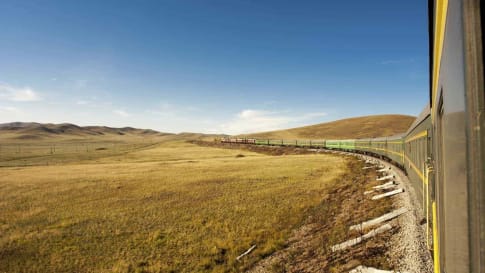
days
JulJourney through Mongolia and Russia small group tour
Visiting Mongolia, Russia
This escorted small group tour traverses this expanse, from Ulaanbaatar to St Petersburg; from the Mongolian Steppes to Siberian taiga and tundra; over the Ural Mountains that divide Asia and Europe to the waterways of Golden Ring. Our program for couples and solo travellers uses two of the great rail journeys of the world; the Trans Mongolian Express and the Trans Siberian Express.
From A$17,850 AUD
View Tour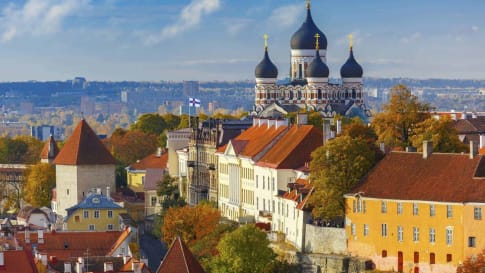
21 days
Sep, MayBaltics Small Group Escorted Tour: Latvia, Estonia, Lithuania
Visiting Estonia, Finland
An escorted small group tour to the Baltic States of Europe that explores the key destinations of this region starting in Berlin, then making its way through Poland, Estonia, Latvia, Lithuania, Finland and concluding in St. Petersburg. Each day has scheduled itineraries supported by local guides who share knowledge and authentic experiences of the places visited. This is small group travelling to the Baltics for like minded people.
From A$13,995 AUD
View Tour
days
Apr, AugIrkutsk to Helsinki on the Trans-Siberian Railway
Visiting Finland, Russia
Escorted tour on the Trans-Siberian railway network from East to West starting in Irkutsk and finishing in Helsinki after 21 days. This is small group travel with like minded people and itineraries that maximise the travel experience of the 6 key destinations explored en-route. Our small group journeys are for mature couples and solo travellers.
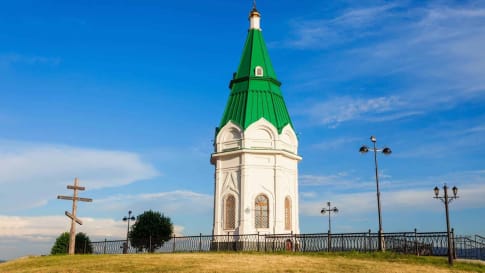
days
Oct, MayHelsinki to Irkutsk on the Trans-Siberian Railway
Visiting Finland, Russia
Escorted tour on the Trans-Siberian railway network from West to East starting in Helsinki and finishing in Irkutsk after 21 days. This is small group travel with like minded people and itineraries that maximise the travel experience of the 6 key destinations explored en-route. Our small group journeys are for mature couples and solo travellers.
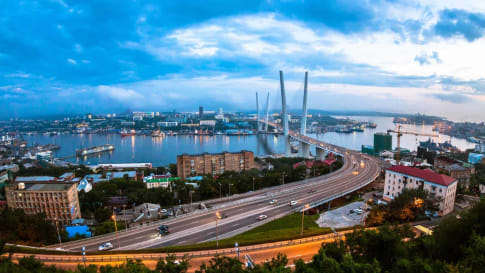
22 days
OctKrasnoyarsk to Vladivostok on the Trans-Siberian Railway
Visiting Russia
Mature and solo travelers group Travel on the Trans-Siberian Railway for 22 days covering the second half of the Trans-Siberian journey, from Vladivostok to Krasnoyarsk to Vladivostok on the edge of Siberian Russia Small group journeys with a tour leader, explores 5 key cities with local guides providing authentic experiences in each with stops of 2-3 nights.
From A$12,650 AUD
View Tour
22 days
Apr, AugVladivostok to Krasnoyarsk on the Trans-Siberian Railway
Visiting Russia
Mature and solo travelers group Travel on the Trans-Siberian Railway for 22 days covering the second half of the Trans-Siberian journey, from Vladivostok to Krasnoyarsk in the heart of Siberian Russia Small group journeys with a tour leader, explores 5 key cities with local guides providing authentic experiences in each with stops of 2-3 nights.
From A$12,560 AUD
View Tour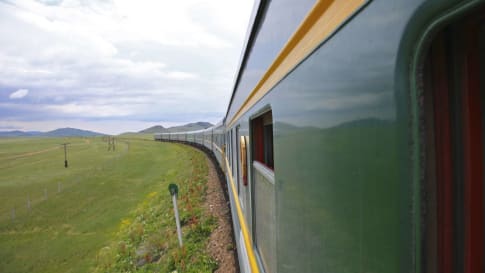
65 days
Mar, Jul, FebSingapore to Lisbon by train
Visiting China
A small group railway journey from Singapore to Lisbon. The longest in the world for senior couples and mature solo travellers. Explore over some 56 days, Singapore, Malaysia, Thailand, Cambodia, Vietnam, China, Mongolia, Russia, France, Spain and Portugal. Limited to 10 travelers on this escorted program.
From A$41,145 AUD
View Tour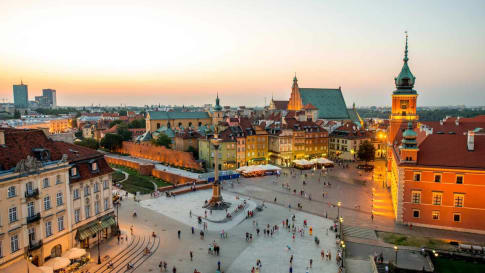
21 days
Jun, Sep, May, OctExploring Poland | Poland Small Group Tour
Visiting Poland
Odyssey's European tour of Poland provides the guests with authentic experiences in a range of key historical destinations to enjoy. Your tour leader supported by knowledgeable local guides who provide daily itineraries that often take you off the beaten path to learn more about the places visited.
From A$13,340 AUD
View Tour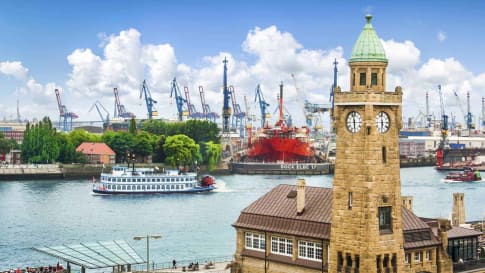
23 days
Sep, JunHistory of the Hanseatic League
Visiting Germany, Poland
Merchants generated much of the wealth of Europe, from Venice to Genoa, Lisbon and London. On the Baltic coast building on the Vikings, the Hanseatic league become the traders influence trade from the middle ages across Europe. This small group tour for senior couple and mature solo travellers explores the history.
From A$15,995 AUD
View TourRelated Articles

Early Russian History and its Key Figures
Early Russian History and its Key Figures It is probably unsurprisingly that the largest country in the world, encompassing Eastern Europe and Northern Asia, with its ever-changing landscapes, multiple timezones and diverse inhabitants, would also…
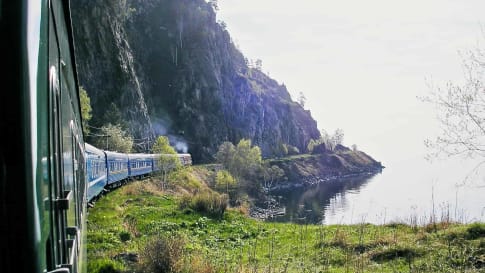
History of the Trans-Siberian Railway
History of the Trans-Siberian Railway The history of the Trans-Siberian Railway, a network of railways connecting Moscow to the Russian Far East, covers important events of the 20th century, tracing the rise and fall of…
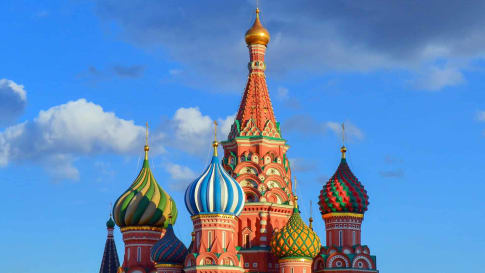
Questions About Russia
Escorted small group tours for mature and senior travellers to Russia. Designed for couples and solo travellers who like to explore and enjoy learning as they travel across Russia to Moscow, St Petersburg, Irkutsk, Vladivostok or Lake Baikal and beyond.

